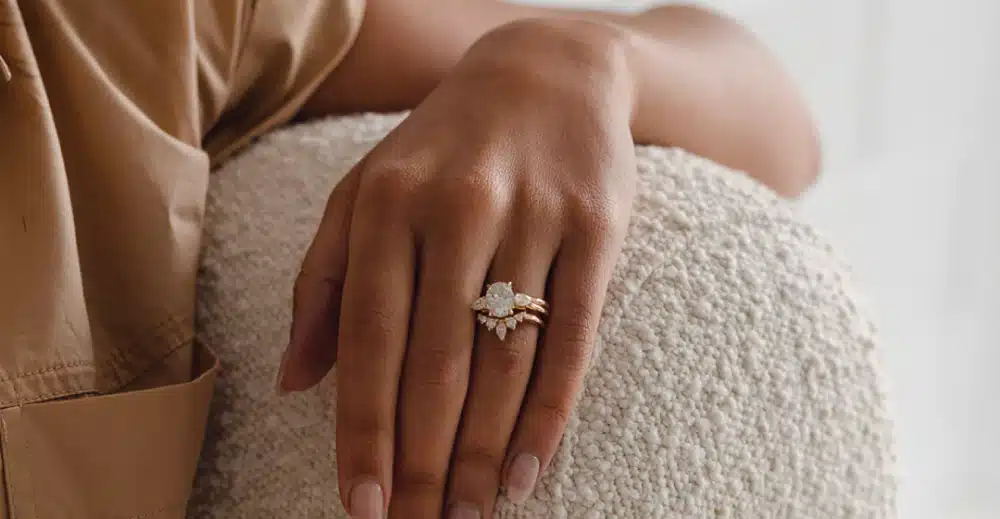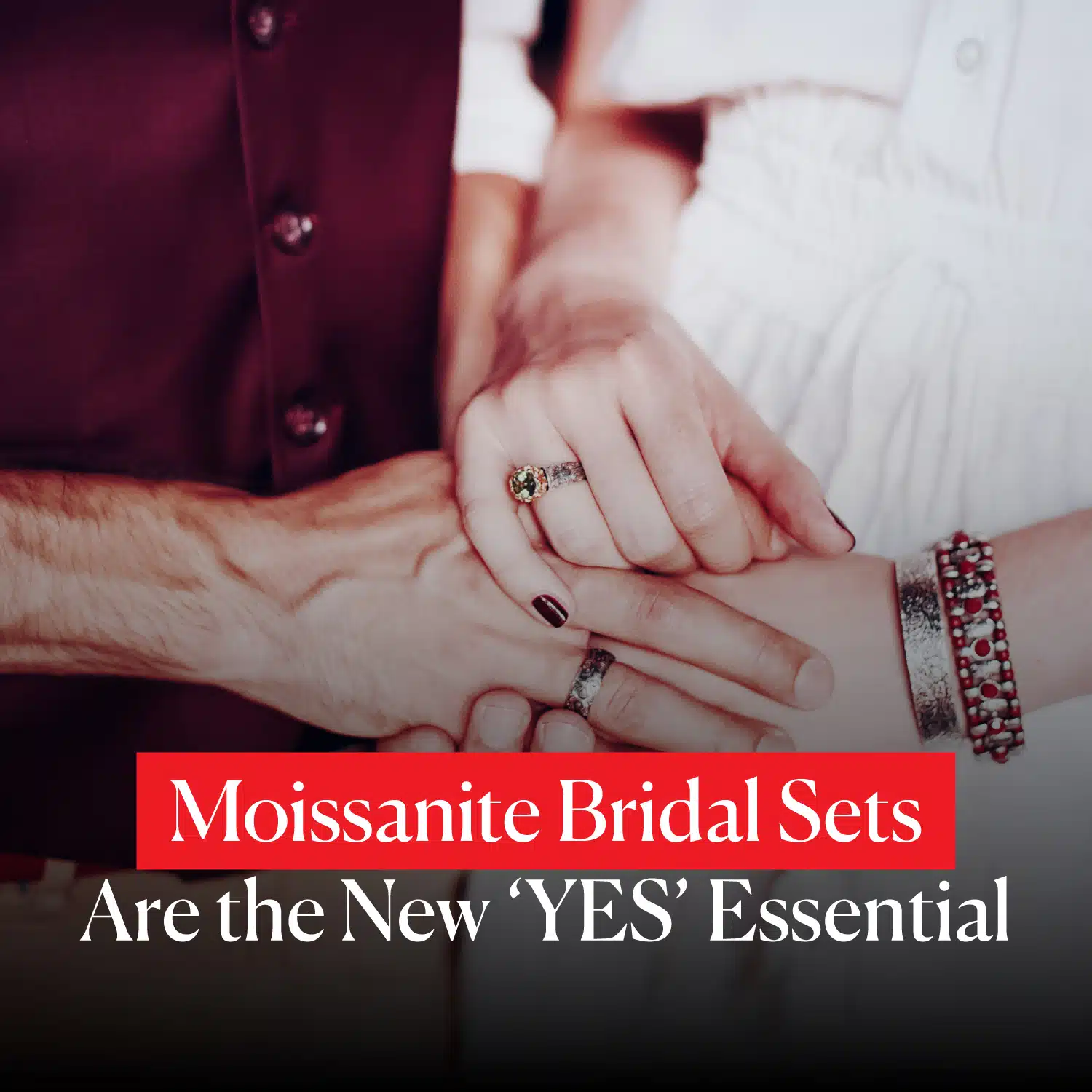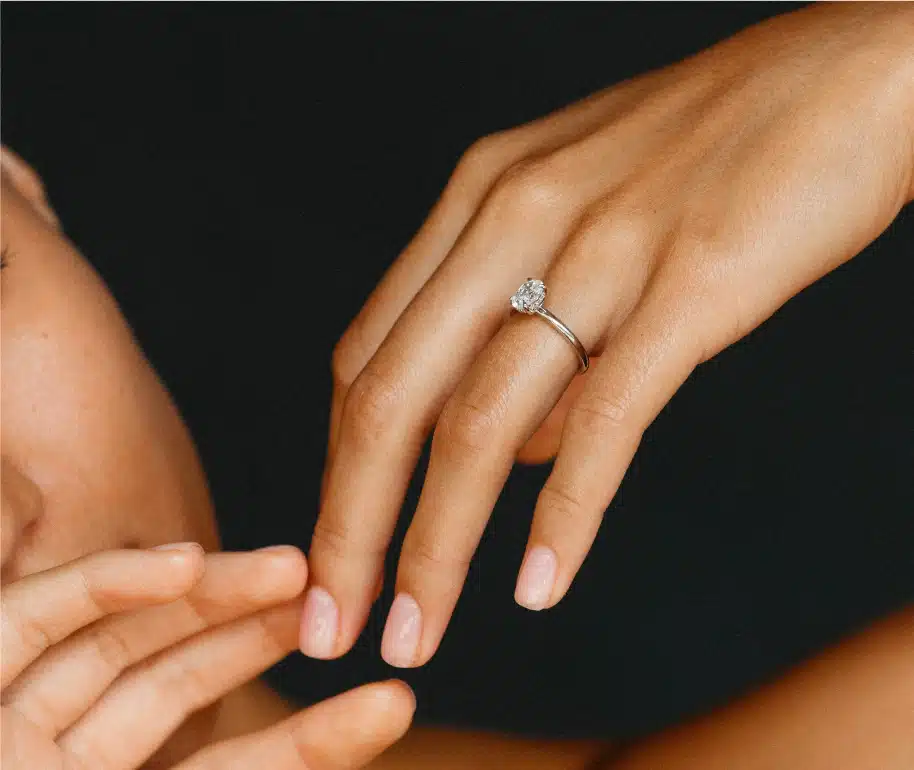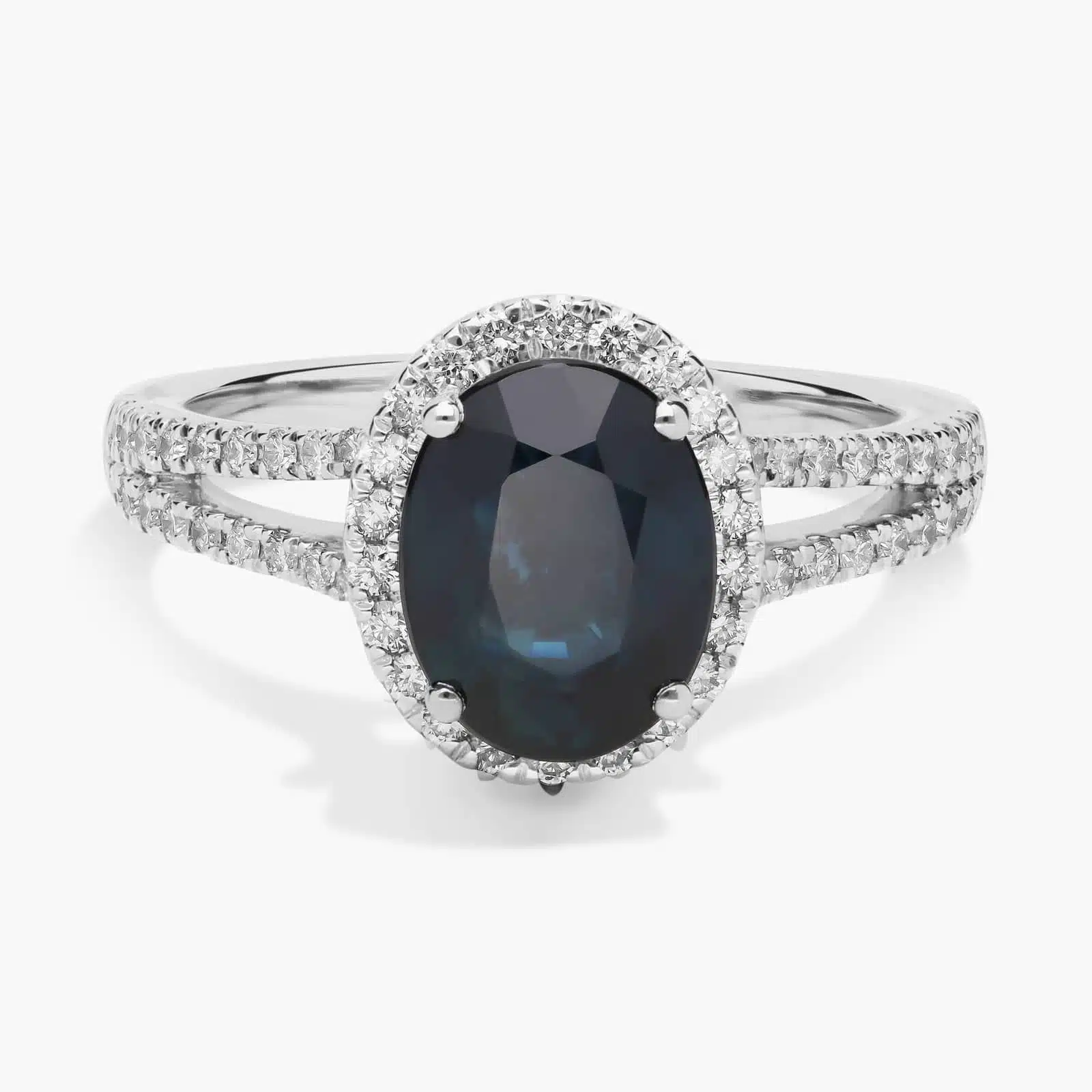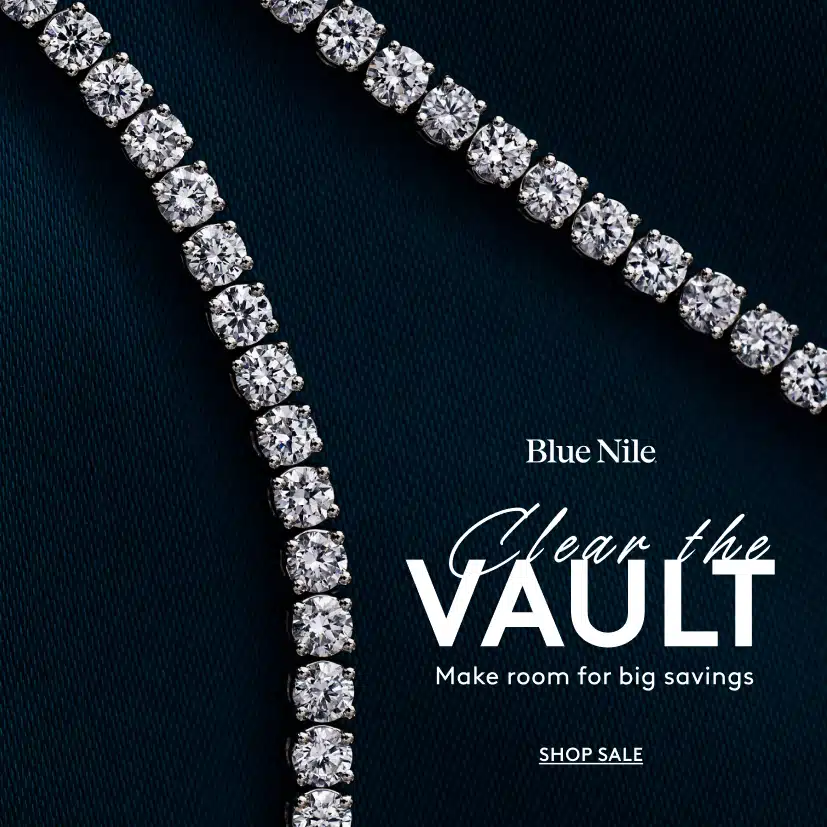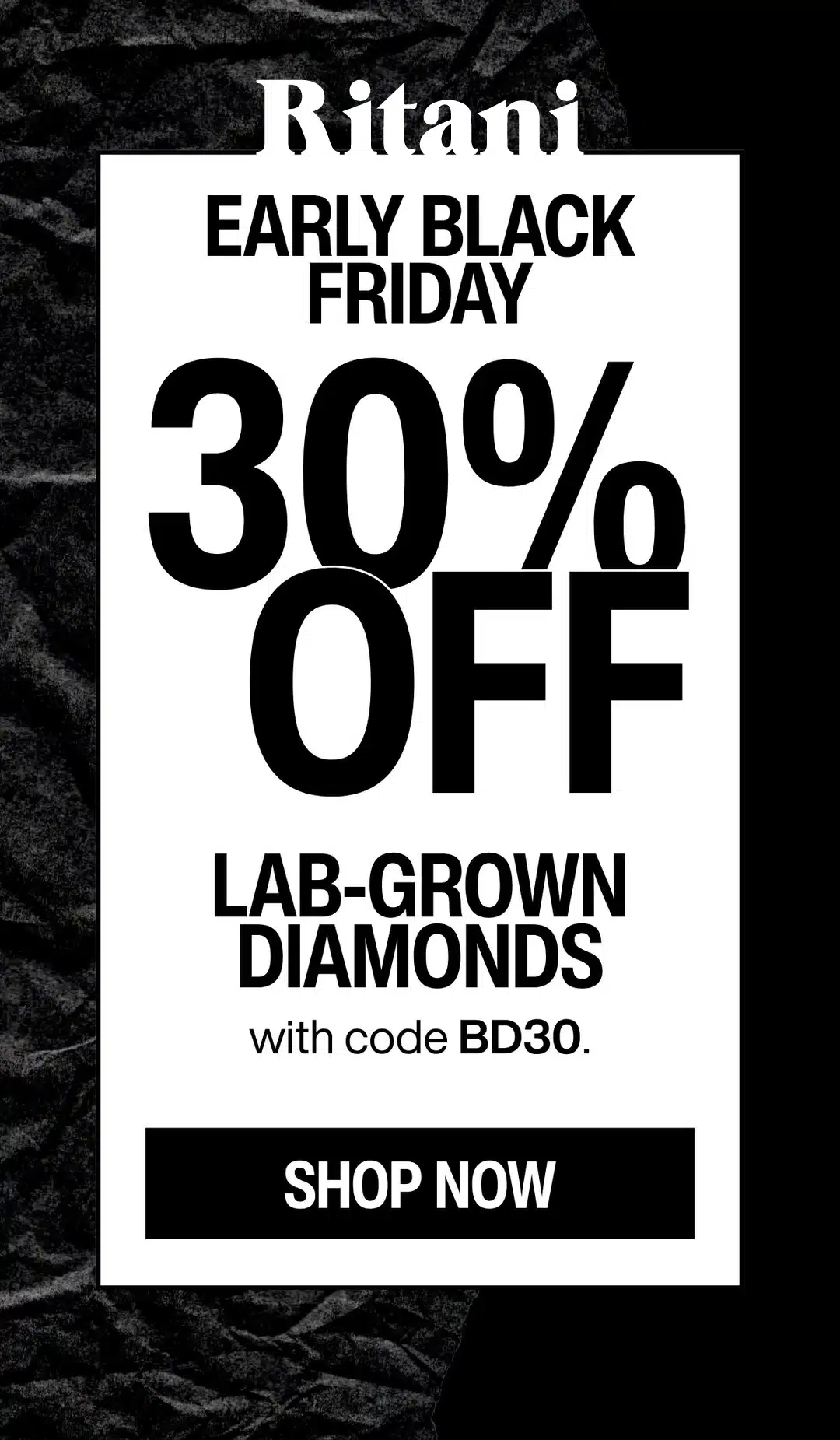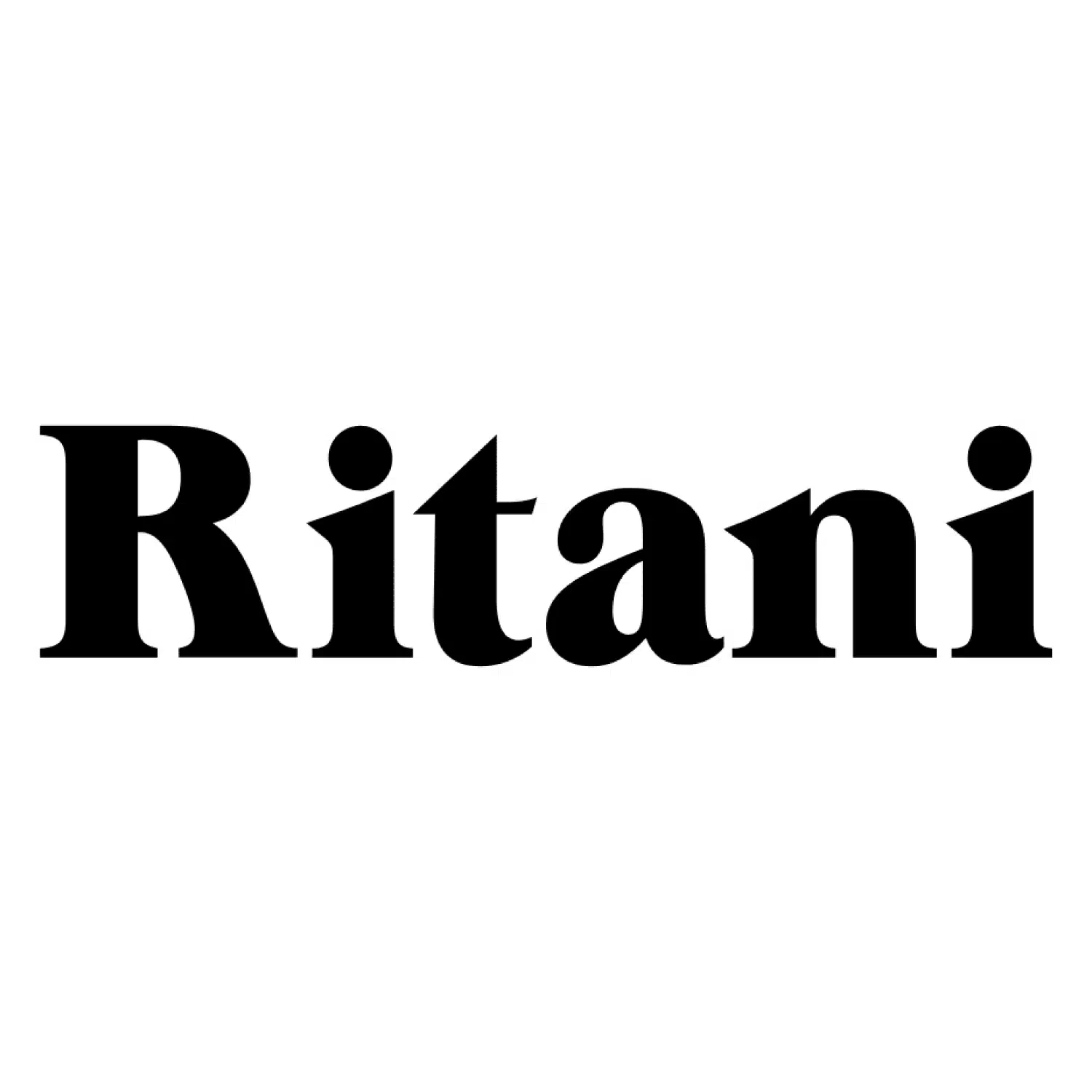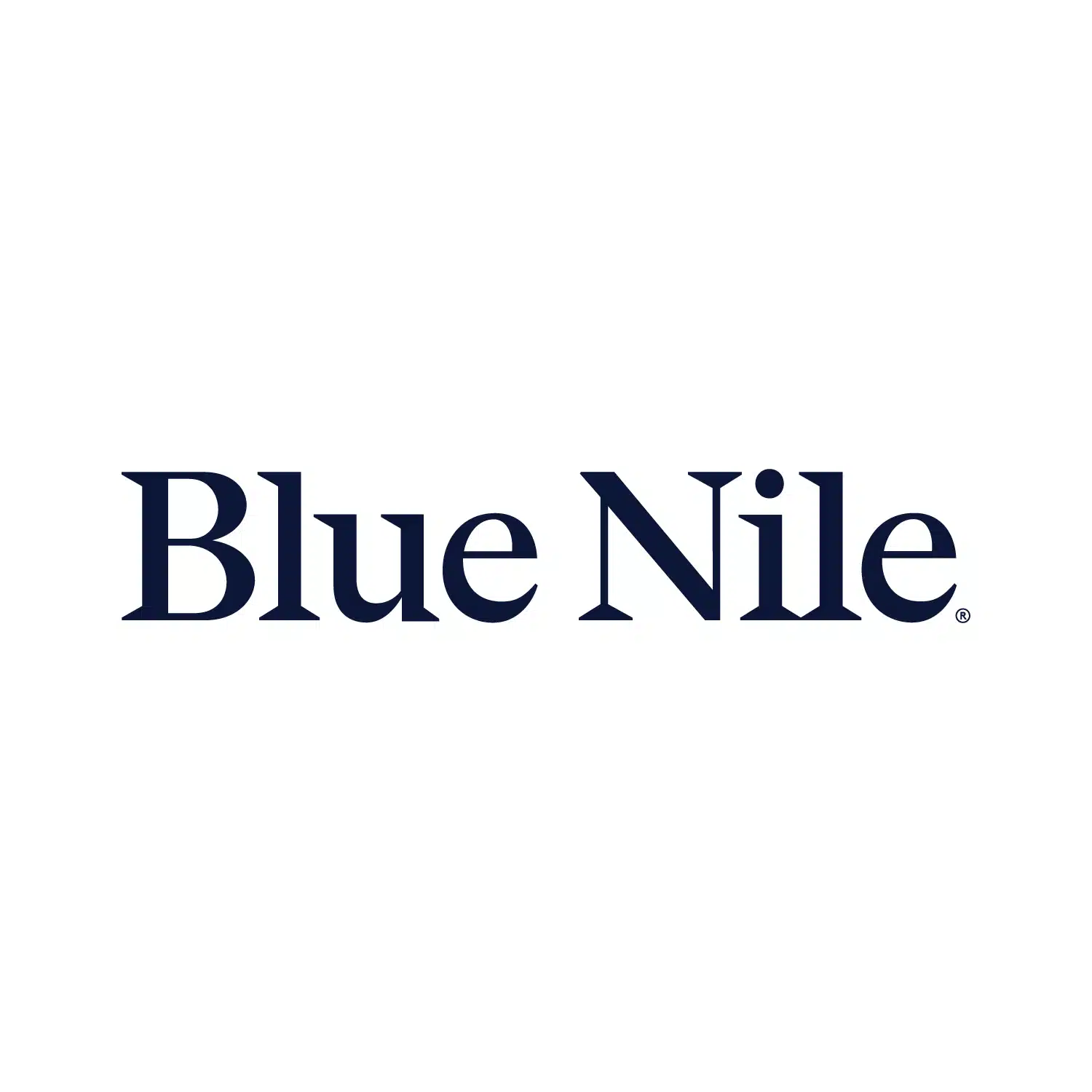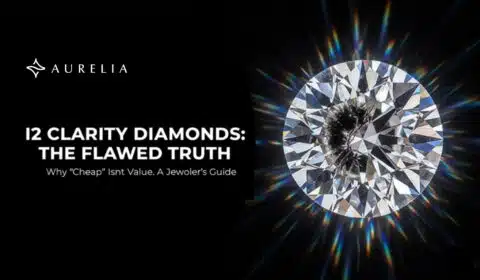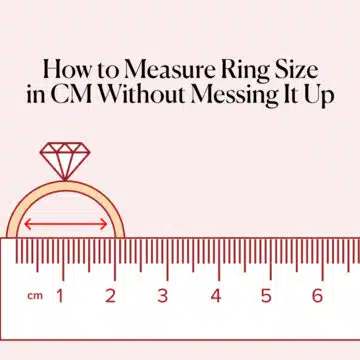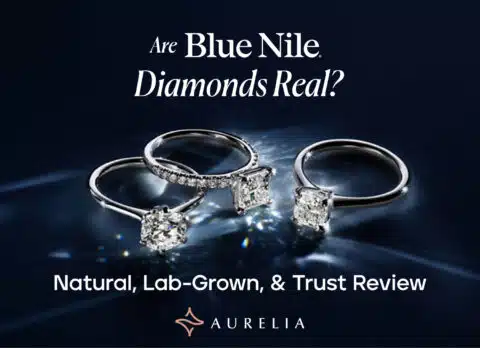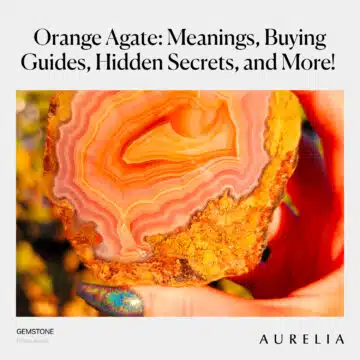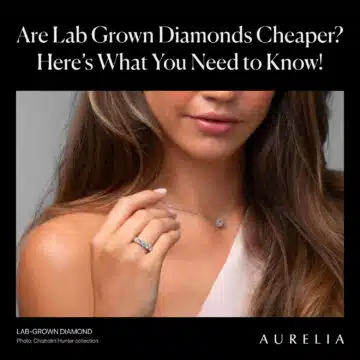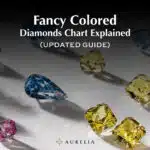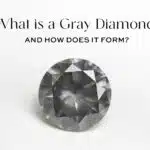Hey there, I’m Mehedi Hasan, and I’m so excited to introduce you to the world of I color diamonds! On the GIA color scale, which runs from D (the whitest) to Z (more yellow), I color diamonds sit in the near-colorless range of G to J—meaning they’re just a step away from the pricier D-H grades like D color diamond but offer stunning, affordable beauty.
Why are I color diamonds so popular? They’re a dream for budget-conscious buyers like you, delivering a white, sparkly look for engagement rings or jewelry without the high cost of D-H grades—saving you 20-30%!
We’ll explore everything: how I color diamonds look, their pricing (including 3 ct diamond SI2 I color price), comparisons like H vs I color diamond and I vs G color diamond, plus the best settings. Want to dive deeper?
Understand the GIA scale better with my diamond grading chart for the 4 Cs. Let’s find your perfect I color diamond!
- What Is an I Color Diamond?
- Visual Appearance of I Color Diamonds
- Pricing of I Color Diamonds
- When to Choose an I Color Diamond
- When Not to Choose an I Color Diamond
- Diamond Cuts and I Color
- Lighting Conditions and I Color Diamonds
- Fluorescence in I Color Diamonds
- Selecting the Best I Color Diamond
- Resale Value and Long-Term Retention
- Color Variations Within I Grade
- I Color Diamonds in Settings
- Lab-Grown vs. Natural I Color Diamonds
- FAQs
- Conclusion
What Is an I Color Diamond?

Let’s dive into the essentials of I color diamonds so you can understand what makes them special and whether they’re the right choice for you. I’ll break this down into clear, bite-sized pieces to help you see why I color diamonds are a fantastic option for budget-savvy buyers looking for near-colorless beauty.
Understanding the GIA Color Grading Scale for I Color Diamonds
First, let’s talk about the GIA color grading scale—it’s the gold standard for evaluating a diamond’s color, created by the Gemological Institute of America (GIA), the most trusted name in diamond grading since the 1950s.
The scale runs from D to Z, where D is completely colorless (think pure ice) and Z has a noticeable yellow or brown tint. This scale measures how much color a diamond shows, with each letter representing a slight shift in hue.
So, where does an I color diamond fit? It’s the 7th grade on this scale, landing in the near-colorless range, which includes G, H, I, and J. That means I isn’t as white as the colorless D, E, or F grades, or even the near-colorless G and H, but it’s still very close—offering a balance of beauty and affordability that makes it a top pick for many.
What Does “Near-Colorless” Mean for I Color Diamonds?
Now, let’s unpack what “near-colorless” really means for an I color diamond—it’s simpler than you might think! An I color diamond has a slight yellow tint, more noticeable than an H but still white to the naked eye in most settings, like on your finger during a dinner date or in natural daylight.
The GIA classifies I as near-colorless because that yellow tint is subtle—you’d typically only spot it under magnification or in specific lighting, like a jeweler’s bright spotlight. In everyday scenarios, an I color diamond looks crisp and sparkly, giving you that white diamond look without the premium price of higher grades.
It’s a smart choice if you want beauty on a budget, especially for engagement rings or jewelry where the diamond’s overall sparkle matters most.
How I Color Diamonds Compare to Other Grades
Let’s see how I color diamonds stack up against other grades on the GIA scale—it’ll help you decide if I is right for you. The D, E, and F grades are colorless, meaning they have no visible tint at all; they’re the whitest of the white, like a fresh snowflake, but they come with a higher price tag—check out my guides on D color diamond, E color diamond, and F color diamond for more on these top-tier grades.
The G and H grades, just above I, are also near-colorless but whiter—H has a bit less tint than I, making it a popular choice for those who want a slightly brighter look. On the other hand, I-J color diamonds are in the same near-colorless range, but J has a more noticeable yellow tint, especially in larger stones like a 2-carat or 3-carat diamond, where the color becomes more apparent. I strikes a great balance—less tint than J, but more affordable than H or G.
Fun Fact About I Color Diamonds’ Value
Here’s a little gem of info for you: I color diamonds save you 20-30% over H, making them a top value pick, according to pricing trends on James Allen! For example, a 1-carat I color, VS2 clarity, excellent cut diamond might cost $3,200, while a similar H color diamond could be $4,200—that’s a savings of $1,000 for a diamond that still looks white in most settings.
💍 Limited Time Savings: Forge your perfect engagement ring! Get up to 20% OFF stunning engagement ring settings at James Allen !
✨ Conscious Value: Save more on brilliance! Lab-Grown Diamonds are on sale, with savings up to 10% OFF at James Allen !
Want to see how I compares directly to H? Compare with my H color diamond guide for a deeper dive. I color diamonds give you near-colorless sparkle at a fraction of the cost—pretty impressive, right?
Visual Appearance of I Color Diamonds
Let’s get a clear picture of what I color diamonds look like in real life—it’s all about understanding their unique charm! I’ll break this down so you can see how an I colored diamond appears, how it compares to other grades, and how the cut impacts its look. This will help you decide if an I color diamond is the perfect fit for your next jewelry piece.
How I Color Diamonds Look to the Naked Eye
So, what do I color diamonds look like when you see them in person? To the naked eye, an I color diamond appears mostly white with a slight yellow tint, which becomes more visible in larger stones—like a 2-carat or 3-carat—or in certain cuts that don’t hide color as well.
Think of it like a glass of water with a hint of honey—subtle but there. In everyday settings, like on your finger at a party or in natural daylight, an I color diamond still sparkles with a white, elegant glow that feels luxurious, making it a great choice for engagement rings or earrings.
Comparison with Other Grades
Let’s compare I color diamonds to other grades on the GIA scale to see how they stack up—it’s easier than you think! This will give you a sense of where I stands in terms of whiteness and value.
- D-F (Colorless Grades): These are the whitest diamonds, with no visible tint at all—like pure ice. A 1-carat D color, VS2 clarity, excellent cut diamond at James Allen costs $6,800, showing off that icy perfection, but it’s pricier than an I.
- H Color vs I Color Diamond: H is one grade whiter than I, with less tint. A 1-carat H color, VS2, excellent cut at Blue Nile is $4,350, looking a bit brighter than an I, especially in white gold settings.
- I vs G Color Diamond: G is two grades whiter than I, making the difference more noticeable. A 1-carat G color, VS2, excellent cut at Ritani costs $4,800, offering a whiter look but at a higher price.
- I-J Color Diamond: J, the next grade down, has a stronger yellow tint, especially in larger stones. A 1-carat J color, VS2, excellent cut at Vrai is $2,900, saving you money but showing more warmth than an I.
Impact of Cut on Color Visibility
The cut of your I color diamond can make that slight yellow tint more or less noticeable—it’s all about how light interacts with the stone. A round brilliant cut, with its 58 facets, is the best at hiding tint because it scatters light like a pro, making your I color diamond look whiter.
On the other hand, emerald and Asscher cuts show more color due to their larger, step-like facets that act like windows, revealing the yellow tint more clearly.
For example, a 1-carat I color, VS2, round brilliant from James Allen at $3,200 looks whiter than a 1-carat I color, VS2, emerald cut at Ritani for $3,000, where the tint is more visible. Want to compare I with a whiter grade? Check out my G color diamond guide for more insights.
Ritani is a trusted name in the online jewelry industry, known for its stunning collection of ethically sourced diamonds and gemstones. With a focus on transparency, Ritani offers customers in-depth diamond education and innovative features like in-store preview options, ensuring a seamless and informed shopping experience.
WHAT WE LOVE ABOUT THEM:
- Free in-store preview of loose diamonds before purchase.
- 30-day free returns, including resizing services for all rings.
- Lifetime warranty that covers prong tightening, polishing, rhodium plating, and more.
- Free insured shipping on all orders.
- Access to a wide selection of GIA-certified diamonds and lab-grown options.
- High-resolution 360° videos of diamonds for accurate evaluation.
- Ethical sourcing and conflict-free diamonds.
- Buy Now, Pay Later financing options available.
- 24/7 customer service with personalized consultations.
Pricing of I Color Diamonds
Let’s talk about the cost of I color diamonds in a simple, detailed way so you can easily understand what to expect when shopping.
I’ll break this down into average prices for different sizes and clarities, compare I color diamonds to other grades, and give you a clear table with real examples from trusted retailers like James Allen, Blue Nile, Ritani, and Vrai. This will help you see the value I color diamonds offer and make a smart choice for your budget.
Average Price Range for I Color Diamonds
First, let’s look at the typical prices for I color diamonds so you know what to budget. For a 1-carat I color diamond with VS2 clarity and an excellent cut, you’ll pay between $3,000 and $4,000. For example, I found a 1-carat I color, VS2, excellent cut diamond for $3,200 at James Allen and another for $3,600 at Blue Nile.
Best Deal Of The Year – Final Days
Blue Nile’s “Clear The Vault” is ON.
Shop Fine Jewelry Upto 70% OFF.
*Exclusions may apply. See Blue Nile for complete details.
Now, if you’re looking for a larger stone, the 3 ct diamond SI2 I color price ranges from $12,000 to $15,000. A genuine 3 ct diamond SI2 I color price aligns with this—for instance, a natural 3-carat I color, SI2 clarity at Ritani costs $12,500, while a lab-grown option at Vrai is $13,800. These prices reflect excellent cuts, ensuring great sparkle for your money.
Cost Comparison with Other Grades
Next, let’s compare I color diamonds to other grades so you can see how much you save—or spend—depending on the color. This will help you decide if I is the right balance of cost and beauty for you.
- H Color vs I Color Diamond: H is one grade whiter than I, so it costs 10-20% more. A 1-carat H color, VS2 clarity, excellent cut diamond at James Allen is $4,200, compared to $3,200 for an I—that’s a savings of $1,000, or about 24%.
- I vs G Color Diamond: G is two grades whiter than I, making it 25-35% more expensive. A 1-carat G color, VS2 clarity, excellent cut at Blue Nile costs $4,800, while an I is $3,600—that’s a $1,200 difference, or 33% more for G.
- I-J Color Diamond: J is one grade below I, with more yellow tint, so it’s 10-15% cheaper. A 1-carat J color, VS2 clarity, excellent cut at Ritani is $2,900, compared to $3,200 for an I—a savings of $300, or about 9%.
Detailed Pricing Table for I Color Diamonds
Here’s a simple table to sum up the prices for I color diamonds and other grades, so you can see everything at a glance. All examples are for excellent cut diamonds, ensuring maximum sparkle.
| Color Grade | Clarity | Carat | Average Price (Excellent Cut) | Where to Check |
|---|---|---|---|---|
| I | VS2 | 1 | $3,000-$4,000 | James Allen, Blue Nile |
| I | SI2 | 3 | $12,000-$15,000 | Ritani, Vrai |
| H | VS2 | 1 | $3,500-$4,500 | James Allen |
| G | VS2 | 1 | $4,000-$5,500 | Blue Nile |
| J | VS2 | 1 | $2,500-$3,500 | Ritani |
Why This Matters for You
I color diamonds give you a near-colorless look at a lower price than H or G, saving you hundreds or even thousands compared to whiter grades. They’re also a bit more expensive than J, but the whiter appearance can be worth it, especially in larger stones.
Want to dive deeper into pricing strategies? Compare more in my H color diamond pricing tips for buyers—it’ll help you shop smarter!
Read Our 5-Star Blue Nile Review
Check our comprehensive Blue Nile review to learn why we rated Blue Nile 5 stars for their exceptional quality and value.
When to Choose an I Color Diamond
Let’s explore the best times to pick an I color diamond so you can decide if it’s the right choice for your needs. I color diamonds are a fantastic option for many buyers, and I’ll break down why they shine in certain situations, settings, and scenarios.
Best for Budget Buyers
Are you looking to save money without sacrificing beauty? I color diamonds are perfect for budget buyers because they look white in most settings while costing less than whiter grades.
For example, a 1-carat I color, VS2 clarity, excellent cut diamond at James Allen is just $3,200, saving you $1,000 compared to a similar H color at $4,200. That’s a lot of savings for a diamond that still sparkles beautifully!
DIAMOND ON SALE!!
⏰ Tick-Tock! The Best Diamond Deals at James Allen Are Disappearing Fast!
Ideal for Specific Settings
I color diamonds look their best in certain settings that help hide their slight yellow tint. Yellow gold is a great choice because the warm metal masks the tint, making the diamond look whiter—a 1-carat I color in yellow gold at James Allen for $3,200 looks stunning.
Smaller stones, like those under 1 carat, also show less tint, so a 0.5-carat I color at $1,800 from Blue Nile is a smart pick.
Practical Scenarios
I color diamonds are ideal for real-life situations where you want beauty and value. They’re perfect for travel rings—why risk a pricier stone on a trip? A 1-carat I color ring at $3,200 from Ritani fits the bill.
They’re also great for first-time buyers who want a gorgeous diamond without overspending. Need a travel ring? See my guide on less expensive engagement rings for traveling for more options.
When Not to Choose an I Color Diamond
While I color diamonds are amazing for many, there are times when they might not be the best fit. Let’s look at a couple of scenarios where you might want to consider a different grade to match your preferences.
If You Want a Whiter Diamond
If you’re dreaming of the whitest diamond possible, I color might not be for you—D through H grades are whiter and show less tint. For example, a 1-carat F color, VS2 clarity, excellent cut diamond at Blue Nile costs $6,500, offering that icy, colorless look compared to an I color at $3,600.
Blue Nile is one of the biggest and most recognized online jewelry retailers, offering an extensive and exclusive inventory. Their high-resolution images are improving and getting closer to the quality offered by James Allen, while their prices remain highly competitive. Right now, Blue Nile offers up to 30% savings on jewelry during a limited-time sale.
WHAT WE LOVE ABOUT THEM:
- 30-day no-questions-asked return policy, with a prepaid shipping label provided by Blue Nile.
- Lifetime warranty on all purchases.
- Free shipping on every order.
- Complimentary services every six months, including prong tightening, repolishing, rhodium plating, and cleaning.
- Insurance appraisal included with your purchase.
- One free resizing within the first year.
- High-quality images available for roughly half of their diamond selection.
- 24/7 customer service support.
- Full credit toward future upgrades, as long as the new item is at least double the value.
- Best-in-class order fulfillment process.
The difference is noticeable in white gold or platinum settings, especially under bright lights, so if whiteness is your priority, aim higher.
If J Offers Similar Looks for Less
Sometimes, a J color diamond might give you a similar look for less money, especially if you’re not tint-sensitive. A 1-carat J color, VS2 clarity, excellent cut at Vrai is $2,900, saving you $300 compared to an I color at $3,200.
In yellow gold or smaller stones, the tint difference is minimal, making J a budget-friendly alternative. Want to compare J grades? Check my guide on J12 vs J13 diamond for more details.
Diamond Cuts and I Color
Let’s explore how the cut of an I color diamond affects its appearance—it’s a key factor in how that slight yellow tint shows up! I’ll break this down into how different cuts impact color visibility and provide real examples with pricing so you can see the difference for yourself.
How Cuts Affect Color Visibility
The cut of your I color diamond can either hide or highlight its slight yellow tint—it’s all about how light moves through the stone. A round brilliant cut is the best at hiding tint because its 58 facets scatter light like a pro, making the diamond look whiter.
Emerald and Asscher cuts, with their larger, step-like facets, show more color since they act like windows, revealing the tint more clearly. Princess cuts are moderate—they sparkle a lot but can reveal some tint, especially in larger stones.
Comparison with Examples
Let’s look at some real examples to see how I color diamonds look in different cuts, with prices included for clarity.
- Round Brilliant I Color: A 1-carat I color, VS2 clarity, excellent cut round brilliant from James Allen at $3,200 looks white and sparkly, with the tint nearly invisible thanks to the light dispersion.
- Emerald Cut I Color: A 1-carat I color, VS2 clarity, emerald cut from Ritani at $3,000 shows the faint yellow tint more clearly due to its step facets, but it’s still elegant.
- Princess Cut I Color: A 1-carat I color, VS2 clarity, princess cut from Blue Nile at $3,100 offers a balanced look—lots of sparkle, but the tint might be noticeable in a 2-carat size.
Want to explore more shapes? Check out my diamond cut chart for a full breakdown of how cuts impact appearance.
Lighting Conditions and I Color Diamonds
Lighting can change how your I color diamond looks, and understanding this will help you choose the right stone. I’ll explain how different lights affect its appearance and share tips to evaluate it properly.
How Light Affects Appearance
Lighting plays a big role in how the slight yellow tint of an I color diamond shows up. In bright store lights, like those intense white ones at a jeweler, the tint is more noticeable—making the diamond look a bit warmer.
In natural daylight, like on a sunny day, an I color diamond looks slightly warmer but still white and beautiful. Under home lamps, such as soft LEDs or warm bulbs, it appears crisp and colorless, perfect for cozy evenings.
Tips for Evaluation
To avoid surprises, test your I color diamond under different lights before buying—it’s a must! Try it in sunlight, LED, and incandescent lighting to see how it looks in real life. A great place to do this is Vrai—they offer realistic views in various conditions, online or in-store.
Looking for a deal? Check my post on do diamond rings go on sale to find sales that can help you save on your I color diamond.
Fluorescence in I Color Diamonds
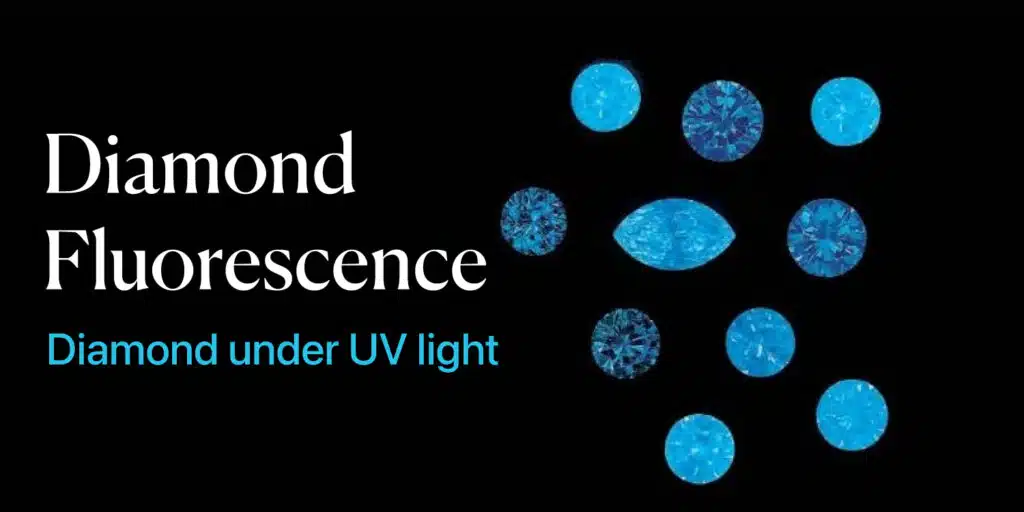
Let’s dive into fluorescence and how it affects I color diamonds—it’s a fascinating feature that can impact your diamond’s look! I’ll break this down into what fluorescence is, how it affects I color diamonds specifically, and how you can check for it to make the best choice.
What Is Fluorescence?
Fluorescence might sound like a fancy term, but it’s pretty simple—some diamonds glow blue under UV light, like sunlight or blacklights, because of nitrogen inside them. According to the GIA, about 30% of diamonds have this trait, which happens naturally due to the diamond’s formation process deep in the Earth.
It’s like a hidden superpower: a diamond that looks normal in regular light might light up blue under UV, adding a unique effect to your I color diamond.
Impact on I Color
So, how does fluorescence affect an I color diamond? It can be a good or not-so-good thing, depending on the strength. Medium fluorescence can actually whiten your I color diamond by masking its slight yellow tint, making it look brighter—especially in sunlight, where the blue glow cancels out the yellow.
For example, a 1-carat I color, VS2 clarity, excellent cut with medium fluorescence at James Allen for $3,200 might look closer to an H.
James Allen is a top leader in online diamond sales, offering cutting-edge imaging technology that lets you inspect diamonds as if you were using a jeweler's loupe. With the largest exclusive selection of loose diamonds available online and excellent pricing, they also boast one of the finest collections of lab-created diamonds on the market. They currently run a 25% discount on selected lab-grown diamonds!
WHAT WE LOVE ABOUT THEM:
- 30-day no-questions-asked return policy, with a prepaid shipping label provided by James Allen.
- Lifetime warranty on all purchases.
- Free international shipping.
- Complimentary prong tightening, repolishing, rhodium plating, and cleaning every six months.
- Insurance appraisals included with purchases.
- One free resizing within 60 days of purchase.
- Free ring inscriptions available.
- Best-in-class high-quality imagery for every diamond in stock.
- 24/7 customer support.
- Premium, best-in-class packaging.
But strong blue fluorescence can be a downside—it might cause haziness, making the diamond look cloudy and reducing its sparkle. This is rare (less than 1% of diamonds get hazy), but it’s something to watch for, especially in an I color diamond where clarity matters.
A strong blue fluorescence diamond I color might not be the best pick if it looks milky under UV light.
How to Check
You can easily check for fluorescence to make sure it doesn’t affect your I color diamond’s beauty—don’t skip this step! Use James Allen’s 360° videos, which show the diamond under different lights, including UV, so you can see if fluorescence impacts clarity.
If the diamond looks cloudy with strong fluorescence, avoid it—but a faint or medium glow can be a bonus. Want to learn more about diamond certification? Check my post on GIA-certified synthetic diamonds for details on how fluorescence is noted.
Selecting the Best I Color Diamond
Choosing the best I color diamond is all about focusing on the right factors to get a stunning stone that fits your needs. I’ll walk you through the key factors to consider and share some tips to make sure you’re buying a top-quality I color diamond.
Key Factors
Here are the three main things to look at when picking an I color diamond—clarity, cut, and carat weight—to ensure you get the best sparkle and value.
- Clarity: Go for VS2 clarity for eye-clean beauty, meaning no flaws are visible to the naked eye. A 1-carat I color, VS2 clarity, excellent cut diamond at Blue Nile for $3,200 looks flawless without a loupe, letting that near-colorless sparkle shine through.
- Cut: Choose an excellent cut to maximize sparkle and hide the faint yellow tint. An excellent cut round brilliant I color diamond reflects light beautifully, making it look whiter and more brilliant.
- Carat: A 1-carat I color diamond is popular, costing $3,000-$4,000, while a 3-carat jumps to $12,000-$15,000—like a 3-carat I color, SI2 clarity at Ritani for $12,500. Pick the carat size that fits your budget and style.
Tips for Buying
Here’s how to make sure you’re getting the best I color diamond—follow these steps to shop with confidence.
- Get a GIA Report: Always buy an I color diamond with a GIA report—it confirms the color, clarity, and cut, ensuring you’re getting what you paid for. The GIA is the most trusted standard in diamond grading.
- Check for No Obvious Inclusions: Even at VS2 clarity, make sure there are no dark or center inclusions that dull the sparkle—use James Allen’s 360° videos to inspect closely.
- Verify Authenticity: Want to be sure your diamond is real? My guide on how to tell if a diamond is real has easy tips to confirm you’re getting a genuine I color diamond.
Diamond IQ Test: Natural or Lab-Grown?
Two identical diamonds: GIA Certified, 1.51ct, D Color, VVS1, Ideal Cut. One is natural ($16,530), the other is lab-grown ($2,390). Choose the diamond you like better and see if you can match it to its origin.
Resale Value and Long-Term Retention
Let’s talk about how I color diamonds hold their value over time—it’s an important factor if you’re thinking about resale or long-term investment. I’ll break this down into how I color diamonds perform in the resale market and what affects their value so you can make an informed choice.
How I Color Holds Value
Wondering how an I color diamond holds up in terms of value? I color diamonds retain decent value, but they typically resell for 20-30% less than D through H grades, which are whiter and more sought after in the luxury market.
For example, a 1-carat I color, VS2 clarity, excellent cut diamond might resell for $2,000-$2,800, while a 1-carat D color of the same specs could fetch $4,500 at James Allen. That’s a difference of $1,700-$2,500, or about 38% more for the D.
James Allen: Our 5-Star Choice for Price and Selection
Check our comprehensive James Allen Review to learn more about their pricing and commitment.
I color diamonds are still a solid choice for everyday jewelry, but they don’t command the same premium as colorless grades.
Factors Affecting Resale
What impacts how much you’ll get when you resell your I color diamond? Two main factors: cut quality and market demand. An excellent cut makes your I color diamond sparkle more, boosting its resale value—a poorly cut stone, even a whiter grade, will sell for less because it looks dull.
Market demand also matters—I color diamonds are popular now for their value, but trends can shift, with buyers sometimes preferring D-H for luxury. Check Ritani to see current demand and how I color diamonds are moving.
Want to learn more about how cut affects value? My post on what is a diamond’s culet explains how this tiny facet impacts brilliance and resale.
Color Variations Within I Grade
Not all I color diamonds are created equal—there’s some variation within the grade that can affect how they look. I’ll explain these differences and share tips on how to pick the best I color diamond for your needs.
Not All I Diamonds Are the Same
Did you know that I color diamonds can vary within their grade? Some I color diamonds lean toward H, looking whiter with less yellow tint, while others nudge closer to J, appearing warmer with a bit more yellow.
This happens because of natural differences in how diamonds form, and the GIA grading allows for a small range within each color grade. So, two I color diamonds might look slightly different—one closer to H’s brightness, the other closer to J’s warmth.
How to Pick the Best
To get the best I color diamond, you’ll want one that looks as white as possible—here’s how. First, check the GIA report to confirm it’s a true I color, not leaning too close to J with extra warmth, and look for minimal secondary tints like brown or gray.
Then, compare stones at Vrai—their online or in-store views let you pick an I color diamond with minimal tint, closer to H, for maximum brightness. Dive deeper into how color and clarity work together in my diamond color and clarity chart—it’ll help you choose a stunning I color diamond.
I Color Diamonds in Settings
The right setting can make your I color diamond look even whiter—let’s explore the best options and ones to avoid. This will help you pick a setting that makes your I color diamond shine its brightest.
Best Settings
I color diamonds look amazing in settings that minimize their slight yellow tint. Yellow gold is a top choice—the warm metal masks the tint, making the diamond look whiter, like a 1-carat I color in yellow gold at Blue Nile for $3,200.
Smaller stones under 1 carat show less tint, so a 0.5-carat I color at $1,800 from James Allen works well. Halo settings with H-I side stones also blend beautifully—a 1-carat I color halo ring at Ritani for $3,500 looks seamless and bright.
Settings to Avoid
Some settings can highlight the yellow tint in an I color diamond, so let’s avoid those if you’re tint-sensitive. Steer clear of emerald or cushion cuts—their larger facets don’t hide color as well as a round brilliant, making the tint more visible, especially in larger stones.
Explore better options in my guide on the benefits of a low-set engagement ring—it’ll help your I color diamond look its best.
Lab-Grown vs. Natural I Color Diamonds
Let’s compare lab-grown and natural I color diamonds to help you decide which is the best fit for you. I’ll break this down into their differences, pricing examples, and reasons why you might choose a lab-grown option, so you can make an informed choice.
What’s the Difference?
Lab-grown and natural I color diamonds look the same to the naked eye—both have that near-colorless sparkle with a slight yellow tint—but they differ in how they’re made. Natural I color diamonds form over billions of years deep in the Earth, while lab-grown ones are created in a lab using technology that mimics those natural conditions.
The GIA grades them the same, so a lab-grown I color diamond has the same beauty as a natural one. The big difference? Lab-grown I color diamonds are 20-30% cheaper.
For example, a 1-carat lab-grown I color, VS2 clarity, excellent cut at Vrai costs $2,200, while a natural one is more expensive, as we’ll see below.
Pricing Example
Let’s look at the numbers to see the cost difference. A natural 1-carat I color, VS2 clarity, excellent cut diamond ranges from $3,000 to $4,000—like one at James Allen for $3,200.
A lab-grown 1-carat I color, VS2 clarity, excellent cut, however, costs $2,000-$3,000—for instance, $2,200 at Vrai. That’s a savings of $1,000, or about 31%, making lab-grown a budget-friendly choice for the same stunning look.
Why Choose Lab-Grown?
Why go for a lab-grown I color diamond? They’re ethical—no mining means no environmental damage or conflict concerns, which is a big plus if sustainability matters to you. They’re also budget-friendly, letting you get a larger or better-quality stone for less.
Check out Vrai for gorgeous lab-grown I color diamonds that sparkle just as brightly. Want to learn more about how they’re made? See my guide on types of lab-grown diamonds for a deep dive.
FAQs
Conclusion
I color diamonds are near-colorless, budget-friendly gems that look white and stunning, making them great for engagement rings. They save you 20-30% compared to whiter grades like H, offering icy beauty without the premium price.
Make an informed choice with this guide—check out Blue Nile or James Allen for the best I color diamonds. Need more help? See my guide on build your own engagement ring on James Allen to create your dream ring!

